Innovative Smart Packaging Solutions for Modern Businesses
By Anttoni Taimela · 28. March 2024
Smart packaging solutions, driven by technologies such as RFID and NFC, are game changers for product traceability, consumer interaction, and sustainability🌱.
Business owners and consumers are both looking to understand the practical benefits and how these solutions can be seamlessly integrated into existing systems.
This article dives straight into the mechanics and merits of smart packaging, looking at its impact on the industry without getting lost in technical jargon.
The Evolution of Smart Packaging
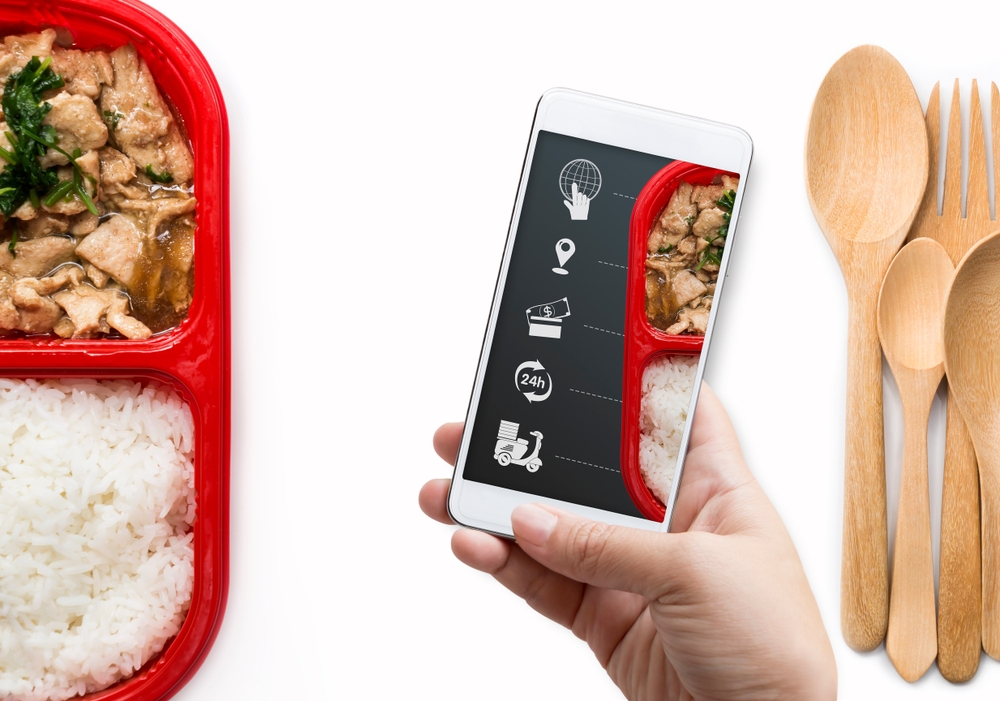 smart takeaway packaging
smart takeaway packaging
A paradigm shift is unfolding in the packaging industry, brought forth by smart packaging.
This innovative packaging solution encompasses active packaging, which extends the shelf-life and enhances the safety and sensorial properties of foods, and intelligent packaging, which detects, communicates, and provides information to enhance safety and alert potential issues.
This progression is driven by various factors such as production practices, global food sales, demographic shifts, changing consumer lifestyles, and advances in nanotechnology and biotechnology.
Smart packaging aligns with current trends such as safety, interaction, and transparency, strengthening customer relationships through detailed product information and personalization options.
With emerging trends like RFID traceability for inventory management and ethylene scavengers to maintain freshness in fruit and vegetable exports, the focus is on sustainability and quality assurance.
Radio Frequency Identification (RFID)
One of the key players in the smart packaging revolution is RFID (Radio Frequency Identification), an automatic identification system.
This wireless system is designed to automatically identify and track tags attached to objects using radio waves.
RFID tags come in two main types: passive, which draw power from rfid readers’ radio waves, and active, which contain their own battery for longer-range reading capabilities.
These rfid systems have become an essential component in the world of smart packaging.
In the context of smart packaging, RFID technology facilitates the creation of intelligent systems that monitor the entire food supply chain, including storage conditions and microbial growth.
RFID-enabled intelligent packaging provides valuable data about food quality, aiding in informed decision-making for various stakeholders.
With each product assigned a unique Electronic Product Code (EPC), RFID tags enhance transparency and tracking throughout the supply chain, bolstering traceability and aiding in combating counterfeit products.
Near Field Communication (NFC)
Another contender in the smart packaging arena is Near Field Communication (NFC).
NFC technology enhances interactions by providing detailed product information, quality tracking, and consumer engagement through brand storytelling and personalized content.
By tapping an NFC-enabled mobile device like a smartphone to NFC tags integrated into product packaging, users can access product authentication, traceability, special offers, and detailed product information.
NFC technology allows for the easy transfer of data over a typical distance of 4 cm or less without the need for an Internet connection, simplifying the exchange data process compared to other wireless technologies.
By utilizing the NFC data exchange format, this technology is still emerging and not yet widely adopted, but it has significant potential to improve customer communication and convenience and provide valuable consumer insights through the use of an NFC device and an NFC tag.
Sustainable Solid Board Packaging
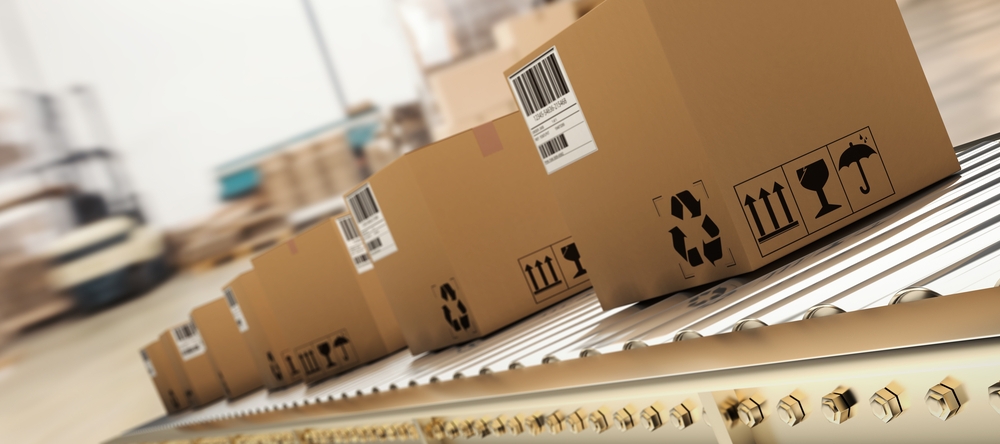 Solid Board Packaging
Solid Board Packaging
The evolution of smart packaging is a fusion of technology and sustainability.
Consider solid board packaging, which is composed of 80% recycled content and 20% from sustainable forest sources.
This type of packaging aids in waste reduction by being easily recyclable, contributing to more environmentally-friendly disposal methods.
Water-based inks are utilized for printing on cardboard, ensuring packaging remains recyclable and supports sustainability initiatives.
By using sustainable solid board packaging, companies can better comply with government regulations aimed at minimizing waste and promoting recyclability.
Moreover, customizable solid board packaging solutions minimize the need for additional protective materials by adjusting to the product’s size and shape, thus reducing waste.
Customizable Options
Solid board packaging offers an array of customizable options.
For instance, producers like Solidus offer custom-designed printing options to enhance the branding and presentation of products.
This customization can include moisture-resistant cardboard punnets for fruits and vegetables, tailored to customer-specific or standard sizes.
Customizable solid board solutions extend to a variety of products such as slip sheets for exporting processes and paper-based 4-point packaging for food and beverage items.
Such packaging can be adapted for the specific requirements of industries, offering protective and sustainable alternatives for products like fresh fish and seafood, with the option for high-quality printing.
Fruit and Vegetable Punnets
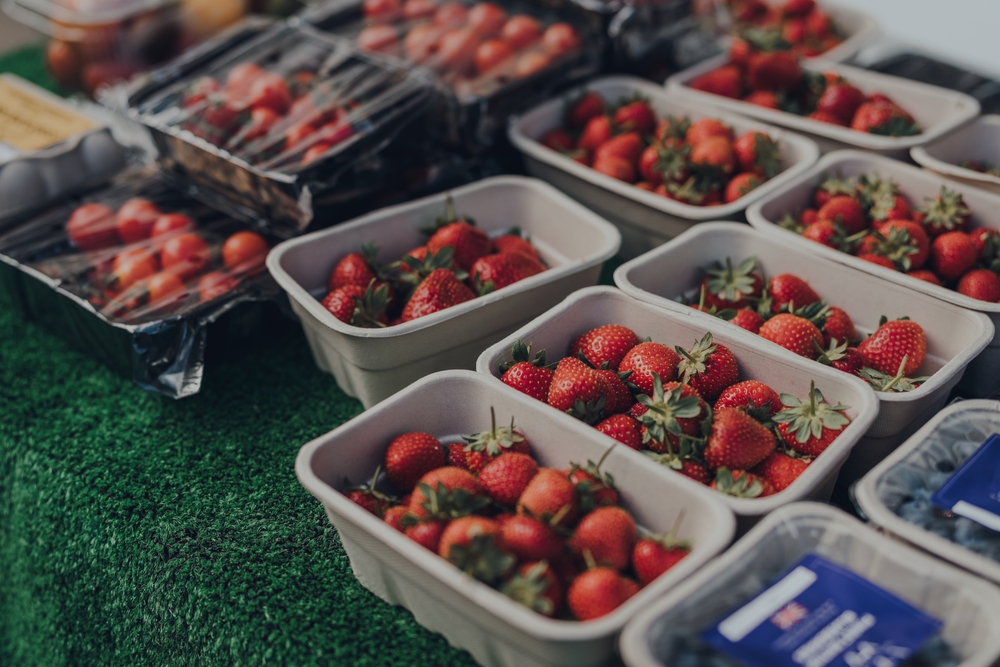 rows punnets of fresh strawberries
rows punnets of fresh strawberries
The merits of solid board packaging are particularly evident in the case of fruit and vegetable punnets.
These punnets have several advantages:
- They are environmentally friendly, being 100% recyclable and made from renewable resources.
- They can be tailored to meet customer needs for product protection.
- They can be customized for a high-quality, distinctive appearance.
These recycled cardboard punnets for produce offer excellent visibility while ensuring the fruit is protected in transit.
Additionally, QR codes on fruit and vegetable packaging serve as an educational tool for consumers and help in reinforcing brand identity and trust by guiding them on the correct disposal of packaging to support sustainability efforts.
Integrating Technology into Packaging
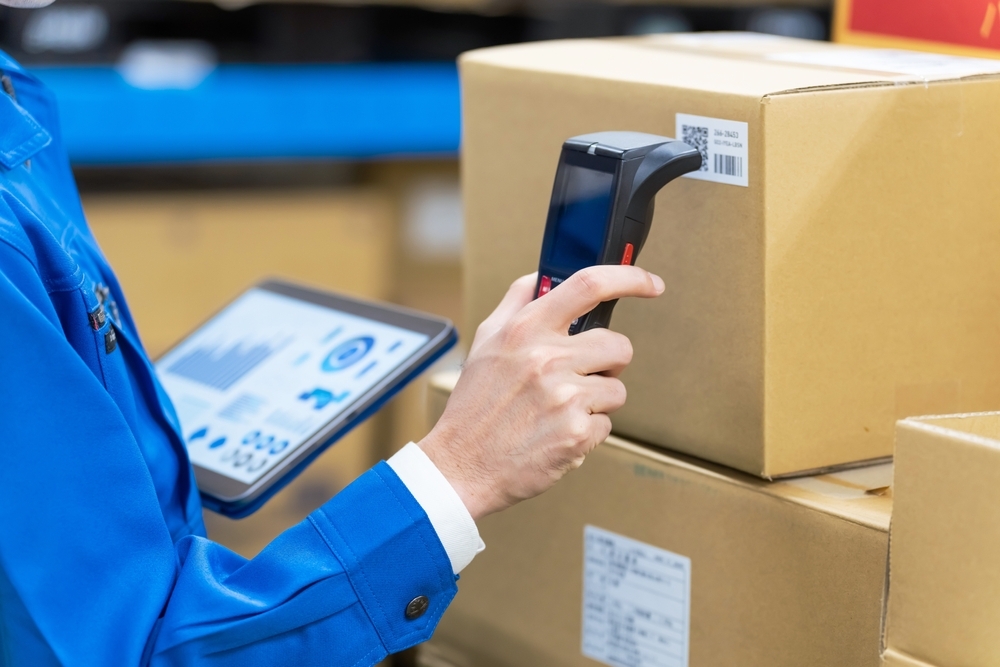 RFID innovative packaging
RFID innovative packaging
The integration of technology into packaging revolutionizes the business landscape.
Some benefits of this integration include:
- RFID tags facilitate easier product reordering
- RFID tags provide essential product-related information, such as expiration dates and safety instructions, which may not otherwise fit on physical packaging
- RFID tags are incorporated or printed directly on food packaging materials, allowing for seamless integration with packaging design.
With advancements in RFID tag production, tags are now available in various shapes and sizes, suitable for different product types including those with metallic or liquid contents.
Meanwhile, NFC RFID tags add value post-purchase through product education, entertainment, and brand interaction.
The integration of NFC technology with IoT allows direct communication between consumers and companies, providing marketers with valuable real-time data on product usage and customer behavior.
Passive and Active RFID Tags
When it comes to RFID tags, there are two main types: passive and active. Passive RFID tags draw power from a reader’s radio waves to transmit identification and other information on, lacking an internal power source.
These tags are optimal for tracking items like retail inventory over short distances due to their smaller size, cost-effectiveness, and shorter read range.
Their lifespan typically aligns with that of the product they are attached to, making them a sustainable option for the duration of the product’s lifecycle.
On the other hand, active RFID tags contain an internal power source enabling them to autonomously broadcast a signal to the reader, significantly enhancing their read range.
These tags are larger and more costly, but their capabilities to be read over 100 feet make them effective for logistics tracking in extensive areas such as container ports.
However, their battery life is finite, generally lasting a few years depending on battery size and usage, which can influence the total cost of ownership in asset tracking applications.
Android Beam and Card Emulation Mode
The potential of specific technologies like Android Beam and Card Emulation Mode in smart packaging requires further investigation due to a lack of available information.
No further facts were found regarding Android Beam and its use in smart packaging applications.
Similarly, no additional facts transfer data were found regarding card emulation mode and its application in smart packaging.
However, it’s worth noting that further investigation is required to explore the features and benefits of using Android Beam and card emulation mode in smart packaging due to a lack of available information.
As we look towards the future development of smart packaging, these technologies could potentially play a significant role in enhancing customer interactions and providing detailed product information.
Health and Safety Considerations
Just like any technological innovation, smart packaging comes with health and safety considerations to prioritize.
The International Agency for Research on Cancer (IARC) categorized radio-frequency radiation (RFR) as a “possible” human carcinogen in 2011.
Studies have reported a range of adverse human health effects associated with RFR exposure, including:
- Increased rates of Schwannomas
- Malignant gliomas
- Chromosomal DNA damage
- Effects on sperm count and motility
Specific vulnerabilities to RFR exposure include children who have higher radiation penetration in brain structures and men with reduced sperm quality due to cell phone storage in trouser pockets.
Additionally, the FDA has raised concerns about electromagnetic interference (EMI) from radio frequency transmitters like RFID with medical devices, prompting advisories for health care professionals to monitor and manage such risks.
FDA Guidelines
The FDA plays an integral role in researching and managing potential risks associated with RFID technology in medical devices.
It has collaborated with manufacturers and the RFID industry to research the impact of RFID on medical devices to prevent and control potential electromagnetic interference (EMI).
Manufacturers, distributors, importers, and device user facilities are legally bound to report to the FDA any adversities with medical devices that could be associated with RFID interference.
Facilities regulated by the FDA are required to follow specific adverse event reporting procedures for any malfunctions or safety concerns involving medical devices, which may include complications from RFID.
Health care professionals are urged to utilize forms from the MedWatch program for reporting adverse events connected to RFID to aid the FDA in tracking and understanding the associated risks.
Reporting Problems to Regulatory Agencies
Reporting adverse events related to smart packaging technology to regulatory bodies is crucial to monitor and address potential health risks.
Systems such as MedWatch, the FDA Safety Information and Adverse Event Reporting Program, are specifically designed to capture and address adverse events or malfunctions related to smart packaging technologies.
In the pharmaceutical sector, it’s essential to report any issues with smart packaging to ensure regulatory compliance and maintain product safety.
Reporting to regulatory agencies also sustains the integrity of the pharmaceutical supply chain by allowing the tracking of issues like temperature deviations or tampering with smart packaging.
Adverse health effects believed to be from RFR exposure should be reported to public health authorities, assisting in the evaluation of potential risks and the formation of safety guidelines.
Choosing the Right Smart Packaging Solution
It is imperative for businesses to select the appropriate smart packaging solution.
Smart packaging technologies like RFID can offer a return on investment due to benefits including counterfeit prevention, stock accuracy, and enhancing consumer loyalty.
However, implementing smart packaging in retail faces challenges such as the necessity for changing business and customer mindsets, the costs involved with developing the technology, and the need for collaboration across partners.
In light of the impending ban on single-use plastic packaging by the government, the importance of selecting environmentally friendly packaging solutions is increasing.
This shift underscores the need for businesses to carefully assess and develop their packaging goals and choose technologies that align with them, such as:
- Eco-friendly fast food packaging
- Biodegradable packaging materials
- Compostable packaging options
- Recyclable packaging solutions
By making these choices, businesses can contribute to reducing plastic waste and promoting sustainability.
Assessing Business Needs
When selecting suitable materials for packaging, businesses, especially in the fast-food sector, must consider durability and food safety.
Functional requirements for other forms of packaging, such as insulation properties for temperature-sensitive products, are key factors to consider during selection.
Packaging design must not only appeal to consumers but also align with the brand image and facilitate ease of use.
Meanwhile, the disposability of packaging, including the option for recyclability and compostability, plays a significant role in reducing environmental impact and meeting sustainability goals.
Safety and regulatory compliance in packaging are compulsory to prevent health hazards and adhere to legal standards within the industry.
Comparing Available Technologies
When it comes to smart packaging technologies, there are several options to choose from.
For example, host-based card emulation (HCE) on Android allows an app to emulate an NFC card and communicate directly with the NFC reader without the need for a secure element chip, offering versatility for serial number and smart packaging applications.
Businesses can categorize their HCE services in Android apps as ‘CATEGORY_PAYMENT’ for payment applications or ‘CATEGORY_OTHER’ for non-payment applications, which helps tailor smart packaging features to business needs.
Using Android’s HCE technology, smart packaging can enable a product to interact with consumers as a payment card, loyalty card, or other types of identification, enriching the consumer experience.
Case Studies: Successful Smart Packaging Implementations
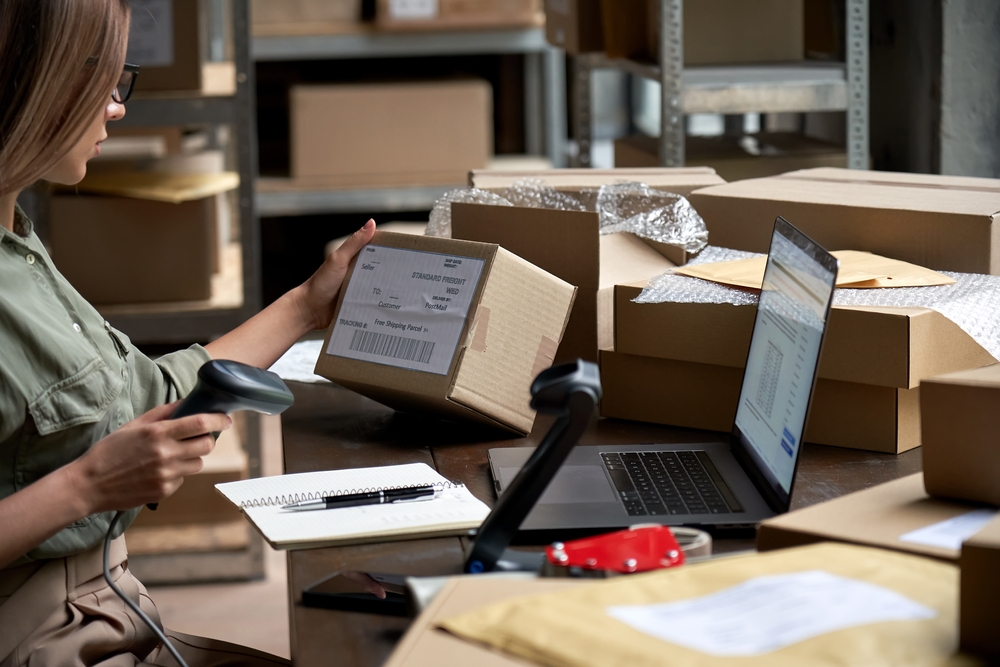 smart packaging implementations
smart packaging implementations
The potential of smart packaging is revealed through its practical, real-world applications.
For instance, Italian olive oil brands utilize NFC tags in their packaging to fight counterfeits and engage consumers by delivering product information to smartphones.
In another example, consumers could access a special website and augmented reality experience for the Super Bowl through QR codes on Pepsi’s marked cans, enhancing customer interaction.
These cases highlight the power of smart packaging in driving repeat purchases and consumer engagement, as seen with Funny-Frisch Potato Chips’ gamified packaging.
Moreover, Ocean Bottle achieved significant consumer engagement with a digital experience that provides practical utility and rewards, incentivizing product registration.
Retail Sector
Smart packaging is making remarkable advancements in the retail sector.
Connected packaging fosters enhanced customer experience by leveraging QR codes and Augmented Reality, extending the information space and creating more dynamic interactions with data stored.
Some brands have utilized QR code campaigns to directly engage customers at the point of sale, illustrating the potential of smart packaging in retail.
RFID technology is being integrated by beauty and personal care product manufacturers to streamline supply chain processes and enhance inventory accuracy.
Moreover, the use of attractive color and graphics through high-quality printing on smart packaging punnets draws consumer attention and may lead to an increase in retail sales.
Technologies such as Android Beam facilitate the instant transmission of data such as product information, coupons, or content to consumer smartphones via NFC-enabled smart packaging.
Food Industry
The food industry is harnessing the capabilities of smart packaging as well.
NFC chips in bottle lids are used to verify product authenticity and indicate if the product has been opened, proving effective in the alcohol industry.
Italian olive oil brands have incorporated NFC tags in their packaging to tackle counterfeit issues, while simultaneously offering consumers additional product information.
Special Pepsi Super Bowl LV cans leveraged QR codes to link consumers with augmented reality content, signifying an innovative approach to customer engagement.
Princes tinned tomatoes implemented QR codes and blockchain technology to provide insights into the product’s sustainable journey, enhancing supply chain transparency for consumers.
Summary
In conclusion, the future of packaging is intelligent, interactive, and sustainable.
With technologies like RFID and NFC, packaging is no longer just about containment and protection; it’s about enhancing product safety, quality, and user experience.
Despite potential health risks and regulatory hurdles, the pros of smart packaging outweigh the cons.
As we transition into a more digital, sustainable, and consumer-centric era, smart packaging is not just an option; it’s a necessity.
Frequently Asked Questions
What is the difference between smart and intelligent packaging?
Smart packaging is a broad category that uses technology for added functionality, while intelligent packaging specifically refers to technology-enabled packaging commonly used for food, beverage, and pharmaceutical products. So, it’s like saying all rectangles are squares, but not all squares are rectangles.
What is smart packaging for fruits and vegetables?
Smart packaging for fruits and vegetables utilizes technologies to track and communicate changes in the food’s environment, such as temperature and freshness indicators, ensuring better quality and safety. Keep your produce in the know with this high-tech packaging!
What is plastic free and smart packaging?
Plastic free and smart packaging is a sustainable solution to reduce plastic waste while preserving food quality and safety. It utilizes biodegradable materials and innovative technologies to address environmental concerns.
What is the difference between passive and active RFID tags?
Passive RFID tags mooch off reader’s waves, while active RFID tags carry their own juice for an extended range. So, one’s a freeloader and the other’s self-sufficient.
How is sustainability considered in smart packaging?
Smart packaging prioritizes sustainability by using a high percentage of recycled content and easily recyclable materials, like solid board and water-based inks. This ensures that the company and packaging remains environmentally friendly and recyclable for a more sustainable approach to packaging.

